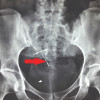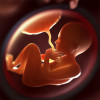
 IJCP Editorial Team
IJCP Editorial Team
Value of Central Fat Accumulation Indices and BMI in Evaluating PCOS
Polycystic ovary syndrome (PCOS) – a common endocrinological disorder, affects women of reproductive age and heightens their risk for metabolic syndrome. While body mass index (BMI) is commonly used to assess obesity, it may not effectively detect central obesity––a prevalent characteristic in PCOS.
A new comparison of central fat accumulation indices (visceral adiposity index - VAI, lipid accumulation product – LAP, and body fat percentage - BFP) with BMI in women with PCOS.
This descriptive, cross-sectional study was conducted at a tertiary care hospital, including 110 women aged 18-40 who met the Rotterdam criteria for PCOS diagnosis. Patients’ height, weight, lipid profile, and calculations of BMI, LAP, and VAI were measured. Body fat percentage was determined using a bioelectrical impedance method, and all indices were subsequently analyzed.
The results revealed a significant positive correlation between BMI and BFP. The VAI and LAP exhibited a significant correlation with each other, while LAP and VAI weakly correlated with BFP. Notably, lean PCOS individuals displayed elevated visceral adiposity indices values and, hence, a less pronounced correlation.
The results indicated that central fat accumulation indices must be incorporated as an essential parameter in evaluating body fat distribution. BFP, VAI, and LAP provide comprehensive insights into both fat distribution and function, presenting a cost-effective means of obtaining complete information to guide the treatment strategy.
Source: Singh N, Hooja N. The Journal of Obstetrics and Gynecology of India. 2023 Oct;73(Suppl 1):156-60.

IJCP Editorial Team
Comprising seasoned professionals and experts from the medical field, the IJCP editorial team is dedicated to delivering timely and accurate content and thriving to provide attention-grabbing information for the readers. What sets them apart are their diverse expertise, spanning academia, research, and clinical practice, and their dedication to upholding the highest standards of quality and integrity. With a wealth of experience and a commitment to excellence, the IJCP editorial team strives to provide valuable perspectives, the latest trends, and in-depth analyses across various medical domains, all in a way that keeps you interested and engaged.












Please login to comment on this article